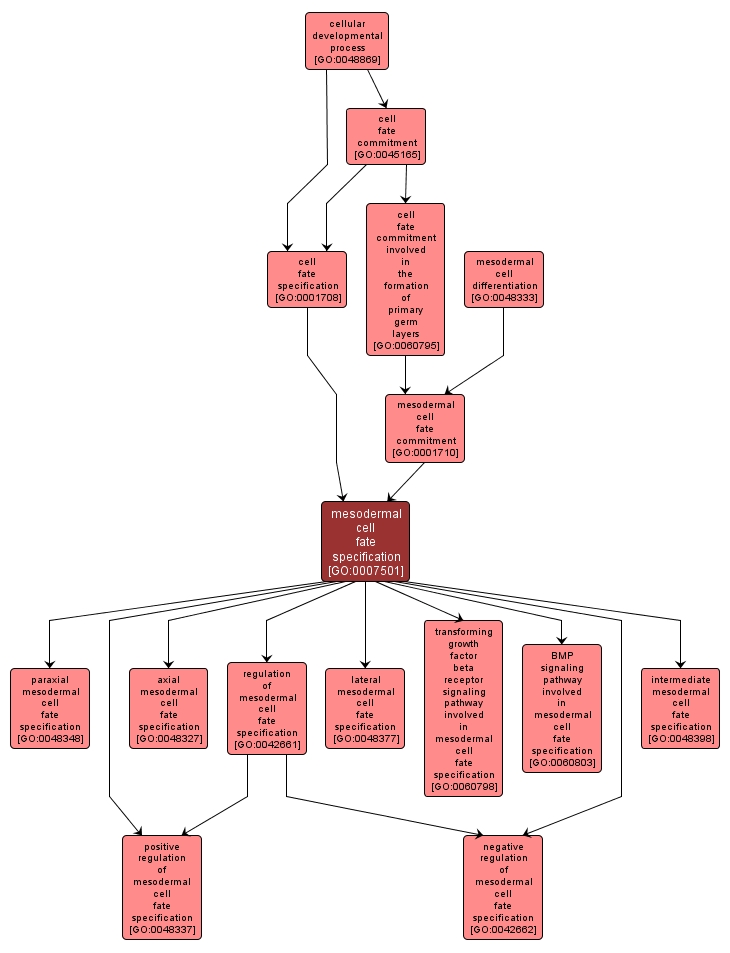GO TERM SUMMARY
|
| Name: |
mesodermal cell fate specification |
| Acc: |
GO:0007501 |
| Aspect: |
Biological Process |
| Desc: |
Process by which a cell becomes capable of differentiating autonomously into a mesoderm cell in an environment that is neutral with respect to the developmental pathway; upon specification, the cell fate can be reversed. |
Synonyms:
- mesoderm cell fate specification
|
|

|
INTERACTIVE GO GRAPH
|














